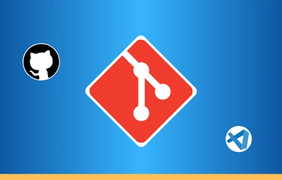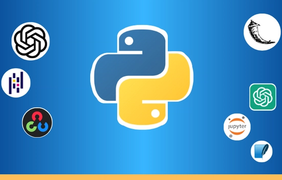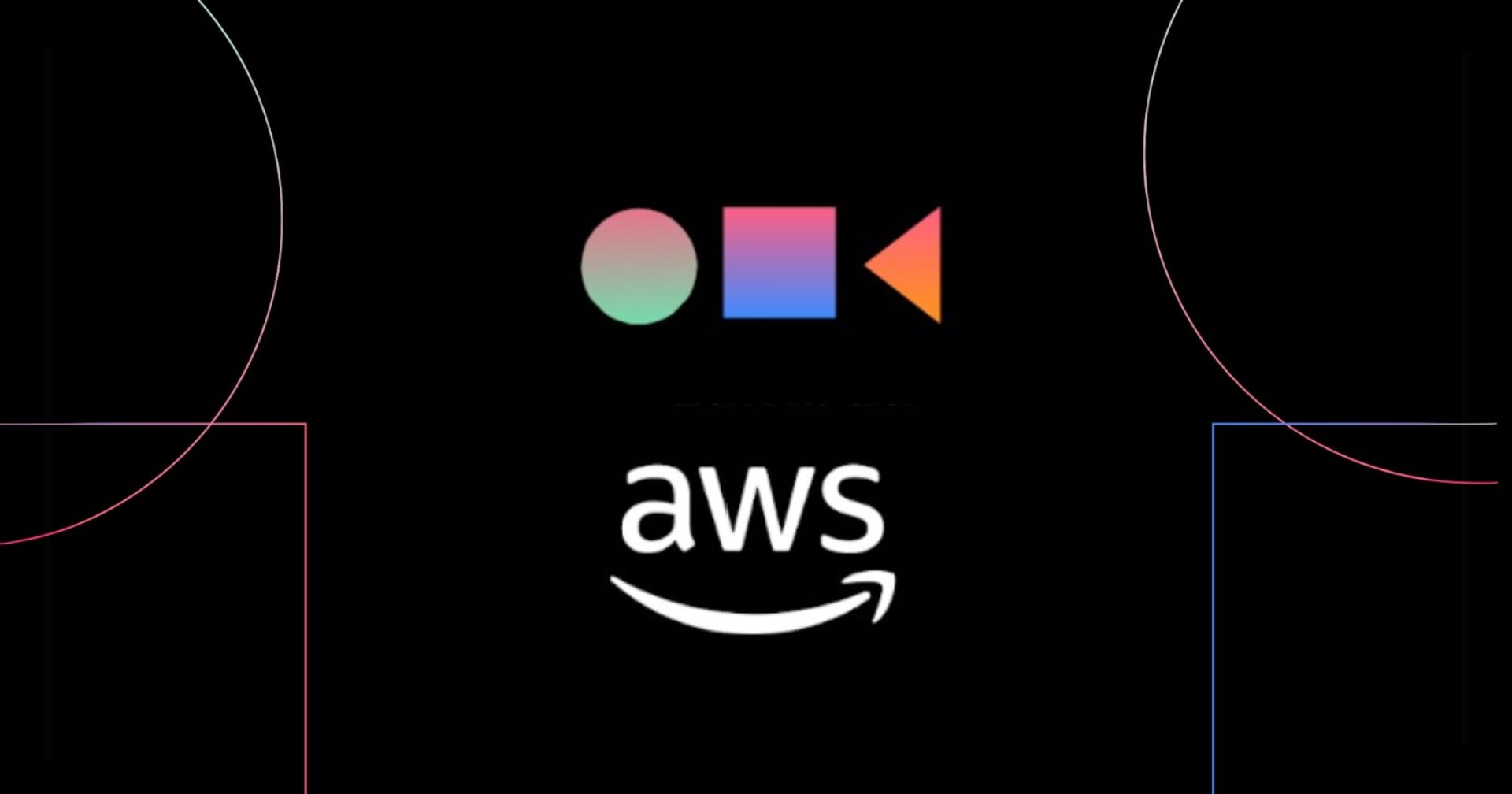Welcome to SitePoint!
Access a huge library of books and courses
On various topics: JavaScript, Python, AI, and more!
Use arrows to navigate
Browse our comprehensive collection of courses, books, and tutorials on a wide range of development and design topics.

video

video

video
·
★ 5.0
video

video

video
·
★ 4.5Browse our comprehensive collection of courses, books, and tutorials on a wide range of topics.
The home for developers



... I joined SitePoint to learn more about web stuff and their PHP/MySQL tutorial was probably the first I used.
Creator of WordPress, CEO of Automattic
Whether you’re a full-stack developer, designer, or looking to get into AI, we’ve got a path for you.

Learn JavaScript, the language of the web. Then deep dive into some popular frontend and backend JavaScript frameworks and start your Full Stack career the right way.

Learn JavaScript, the language of the web. Then deep dive into some popular frontend and backend JavaScript frameworks and start your Full Stack career the right way.

Learn JavaScript, the language of the web. Then deep dive into some popular frontend and backend JavaScript frameworks and start your Full Stack career the right way.

Learn JavaScript, the language of the web. Then deep dive into some popular frontend and backend JavaScript frameworks and start your Full Stack career the right way.

Learn JavaScript, the language of the web. Then deep dive into some popular frontend and backend JavaScript frameworks and start your Full Stack career the right way.

Learn JavaScript, the language of the web. Then deep dive into some popular frontend and backend JavaScript frameworks and start your Full Stack career the right way.
Discover our library filled with learning paths for all kinds of learners.
Browse thousands of jobs in Software Development
1d ago
<p>Everyone deserves the best internet possible, and that’s the refreshingly great experience we’re creating at Ziply Fiber. We’re bringing fiber to more than one million homes and businesses across the broader Northwest. By pairing brilliantly fast internet with customer choice and control, we’re making it simple and easy for you to connect to the things that matter most to you. Ziply Fiber is based in Kirkland, Washington, providing communities across Washington, Oregon, Idaho, and Montana with fiber internet in addition to streaming TV, privacy products, and phone service as well.<br></p><h3>Job Description</h3><p>This is a remote position.</p><p><b>$124,494 to $175,751 annually DOE</b></p><p>At Ziply Fiber, our mission is to elevate the connected lives of our communities every day. We are delivering the fastest home internet in the Northwest, with a focus on areas traditionally underserved by mainstream internet companies. And as our state-of-the-art fiber network expands in WA, OR, ID and MT, so does our need for team members who can help us grow and realize our goals.<br></p><p>We may be building internet, but we are reaching real people. We strive to build relationships and provide customers and communities with refreshingly great experiences.<br></p><p>We emphasize our values in all our interactions:<br></p><p><b>Genuinely Caring:</b> Our customers and colleagues are people, and quite possibly our neighbors. We put ourselves in their shoes and give them our full attention.<br></p><p><b>Empowering You:</b> We empower our customers to choose the products that best meet their needs, and we support our employees to implement solutions that elevate the experiences of our customers and coworkers.<br></p><p><b>Innovation and Improvement:</b> We always look for ways to make the experiences of our customers – and each other – better.<br></p><p><b>Earning Your Trust:</b> We earn trust by communicating simply and transparently as real people, not as a corporation.<br></p><p><b>Job Summary</b></p><p>The Billing Systems Architect leads the design, development, and maintenance of our billing systems. This critical role will focus on optimizing and simplifying our billing processes, particularly for phone service, commercial billing plans, and subscription billing. The ideal candidate will have a strong background in billing systems architecture, a deep understanding of usage and mediation processes, and a proven ability to manage complex projects. This role requires a blend of technical expertise, business acumen, and leadership skills.</p><p><b>Essential Duties and Responsibilities:</b></p><ul> <li>Technical Product Ownership of Commercial Billing Systems: Take full ownership of the architecture, performance, and reliability of our commercial billing systems, ensuring they meet the evolving needs of the business.</li> <li>Subscription Billing Simplification: Lead initiatives to simplify and streamline our subscription billing processes, improving efficiency and customer experience. This includes identifying areas for automation and process improvement.</li> <li>Usage and Mediation for Phone Service: Design and implement robust usage and mediation solutions for our phone services, ensuring accurate billing and revenue recognition.</li> <li>Commercial Billing Plan Development: Collaborate with product and sales teams to design and implement new commercial billing plans.</li> <li>API Integration: Design and implement APIs to integrate billing systems with other business applications.</li> <li>System Design and Architecture: Lead the design and architecture of scalable and reliable billing systems.</li> <li>Application Process Management: Oversee the application processes related to billing systems.</li> <li>Collaboration and Communication: Work closely with cross-functional teams to understand their requirements.</li> <li>Problem Solving and Troubleshooting: Proactively identify and resolve billing system issues.</li> <li>Documentation: Maintain comprehensive documentation of billing systems architecture, processes, and configurations.</li> <li>Additional Responsibilities: Performs other duties as required to support the business.</li> </ul><b>Qualifications:</b><ul> <li>Bachelor's degree in Computer Science or a related field is required.</li> <li>Master's degree in Business or a related field is preferred.</li> <li>Minimum of seven (7) plus years’ experience in billing systems architecture and development.</li> <li>Deep understanding of usage-based billing, mediation processes, and CDR management.</li> <li>Proven experience in designing and implementing complex billing systems.</li> <li>Strong knowledge of APIs and integration technologies.</li> <li>Experience with subscription billing models and best practices.</li> <li>Excellent analytical, problem-solving, and communication skills.</li> <li>Ability to work effectively in a fast-paced, dynamic environment.</li> <li>Strong leadership skills and the ability to influence and motivate others.</li> <li>Experience building systems and applications for usage-based subscription billing processes is required.</li> <li>Experience with cloud-based billing solutions is required.</li> <li>Familiarity with payment capture platforms is required.</li> </ul><b>Knowledge, Skills, and Abilities:</b><ul> <li>Excellent troubleshooting and analytical skills are required.</li> <li>Experience with data analytics and reporting tools.</li> <li>Must be thorough and efficient in creating documentation.</li> <li>Familiarity with billing platforms is a plus.</li> <li>Problem-solving, attention to detail, and ability to work in Agile/Scrum teams.</li> <li>Strong communication to explain technical solutions to non-technical stakeholders.</li> </ul><b>Work Authorization</b><p>Applicants must be currently authorized to work in the US for any employer. Sponsorship is not available for this position.<br></p><b>Physical Requirements</b><p>The physical demands described here are representative of those that must be met by an employee to successfully perform the essential functions of this job. Reasonable accommodation may be made to enable individuals with disabilities to perform the essential functions.<br></p><p>Essential and marginal functions may require maintaining the physical condition necessary for bending, stooping, sitting, walking, or standing for prolonged periods of time; most of the time is spent sitting in a comfortable position with frequent opportunity to move about. The employee must occasionally lift and/or move up to 25 pounds.<br></p><b>Diverse Workforce / EEO:</b><p>Ziply Fiber is an equal opportunity employer. Ziply Fiber will consider all qualified candidates regardless of race, color, religion, national origin, gender, age, marital status, sexual orientation, veteran status, and the presence of a non-job-related handicap or disability or any other legally protected status.<br></p> #J-18808-Ljbffr
1d ago
<h3><b>Position:</b></h3><p>DevOps with Github Action</p><h3><b>Job Description:</b></h3><p>DevOps principles and Agile practices, including Infrastructure as Code (IaC) and GitOps, to streamline and enhance development workflows.</p><ol> <li> <b>Infrastructure Management:</b> Oversee the management of Linux-based infrastructure and understand networking concepts, including microservices communication and service mesh implementations.</li> <li> <b>Containerization & Orchestration:</b> Leverage Docker and Kubernetes for containerization and orchestration, with experience in service discovery, auto-scaling, and network policies.</li> <li> <b>Automation & Scripting:</b> Automate infrastructure management using advanced scripting and IaC tools such as Terraform, Ansible, Helm Charts, and Python.</li> <li> <b>AWS and Azure Services Expertise:</b> Utilize a broad range of AWS and Azure services, including IAM, EC2, S3, Glacier, VPC, Route53, EBS, EKS, ECS, RDS, Azure Virtual Machines, Azure Blob Storage, Azure Kubernetes Service (AKS), and Azure SQL Database, with a focus on integrating new cloud innovations.</li> <li> <b>Incident Management:</b> Manage incidents related to GitLab pipelines and deployments, perform root cause analysis, and resolve issues to ensure high availability and reliability.</li> <li> <b>Development Processes:</b> Define and optimize development, test, release, update, and support processes for GitLab CI/CD operations, incorporating continuous improvement practices.</li> <li> <b>Architecture & Development Participation:</b> Contribute to architecture design and software development activities, ensuring alignment with industry best practices and GitLab capabilities.</li> <li> <b>Strategic Initiatives:</b> Collaborate with the leadership team on process improvements, operational efficiency, and strategic technology initiatives related to GitLab and cloud services.</li> </ol><p><b>Required Skills & Qualifications:</b></p><ol> <li> <b>Education:</b> Bachelor’s or Master’s degree in Computer Science, Engineering, or a related field.</li> <li> <b>Experience:</b> 7-9+ years of hands-on experience with GitLab CI/CD, including implementing, configuring, and maintaining pipelines, along with substantial experience in AWS and Azure cloud services.</li> </ol><h3><b>Location:</b></h3><p>IN-GJ-Ahmedabad, India-Ognaj (eInfochips)</p><h3><b>Time Type:</b></h3><p>Full time</p><h3><b>Job Category:</b></h3><p>Engineering Services</p> #J-18808-Ljbffr
1d ago
<p><strong>A Career with Point72’s Long/Short Equities Team</strong></p><p>Long/Short Equity is Point72’s core strategy and its success is dependent upon our sector-based investing teams. Using fundamental research, our research analysts inform the investment strategies of our portfolio managers. Through our Point72 University, you have access to an unparalleled training and coaching curriculum to help foster your success. We offer you a clear path based on your abilities, willingness to work hard, and performance. Join us if you're looking for a career at the forefront of investing.</p><p><strong>What you’ll do</strong></p><p>Point72 is seeking an AI engineer to join a long/short equities investment team. In this role, you will collaborate closely with the investment team to explore potential opportunities to utilize GenAI and machine learning applications. We are looking for an individual with a keen intellectual curiosity, a creative approach to problem-solving, and an entrepreneurial mindset for tackling challenges sometimes without obvious solutions. The ideal candidate is a proactive self-starter, ready to take the lead on projects. You will partner with Investment Services teams to identify opportunities and build approved adaptable systems that challenge off-the-shelf solutions. Your projects may span both on-premises and AWS environments, and potentially leverage technologies such as Kafka, Spark, Cloud warehouses, and Data Lakes, and employing programming languages like Java, Python, and SQL.</p><p>Specifically, you will:</p><ul> <li>Work alongside a portfolio manager and team of analysts to explore potential opportunities to utilize GenAI and machine learning applications in partnership with Compliance and Global Information Security</li> <li>Integrate and process Compliance-approved internal and external data (structured and unstructured)</li> <li>Create tools and infrastructure to support and enhance the team’s quantitative efforts</li> <li>Develop quantitative insights to potentially aid the investment team in generating investment ideas</li> <li>Stay up to date on AI/ML market landscape, trends, and technological innovations to provide recommendations on new tools and methodologies for adoption</li> </ul><p><strong>What’s Required</strong></p><ul> <li>Bachelor's degree in computer science, engineering, or a related technical field, or equivalent practical experience</li> <li>Strong proficiency in SQL and Python (with an emphasis on Pandas, PySpark, etc.)</li> <li>Experience with Generative AI technology and LLMs</li> <li>Experience with cloud platforms, Terraform, CI/CD pipelines, Linux, Airflow, Databricks, Spark</li> <li>Strong analytical skills and the ability to adapt to a rapidly changing environment</li> <li>Ability to work independently as well as collaborate across departments</li> <li>Commitment to the highest ethical standards</li> </ul><p><strong>We take care of our people</strong></p><p>We invest in our people, their careers, their health, and their well-being. When you work here, we provide:</p><ul> <li>Fully-paid health care benefits</li> <li>Generous parental and family leave policies</li> <li>Volunteer opportunities</li> <li>Support for employee-led affinity groups representing women, people of color and the LGBTQ+ community</li> <li>Mental and physical wellness programs</li> <li>Tuition assistance</li> <li>A 401(k) savings program with an employer match and more</li> </ul><p><strong>About Point72</strong></p><p>Point72 is a leading global alternative investment firm led by Steven A. Cohen. Building on more than 30 years of investing experience, Point72 seeks to deliver superior returns for its investors through fundamental and systematic investing strategies across asset classes and geographies. We aim to attract and retain the industry’s brightest talent by cultivating an investor-led culture and committing to our people’s long-term growth. For more information, visit www.Point72.com/about.</p><p>The annual base salary range for this role is $150,000-$225,000 (USD), which does not include discretionary bonus compensation or our comprehensive benefits package. Actual compensation offered to the successful candidate may vary from posted hiring range based upon geographic location, work experience, education, and/or skill level, among other things.</p><h3>Apply for this job</h3> #J-18808-Ljbffr
1d ago
<h3>Software Development Engineer, Amazon Connect - Entity Resolution</h3><p>Job ID: 2934841 | Amazon Development Center U.S., Inc.</p><p>As part of the AWS Solutions organization, we have a vision to provide business applications, leveraging Amazon’s unique experience and expertise, that are used by millions of companies worldwide to manage day-to-day operations. We will accomplish this by accelerating our customers’ businesses through delivery of intuitive and differentiated technology solutions that solve enduring business challenges. We blend vision with curiosity and Amazon’s real-world experience to build opinionated, turnkey solutions. Where customers prefer to buy over build, we become their trusted partner with solutions that are no-brainers to buy and easy to use.</p><p>Are you interested in being part of a team of software engineers tasked with building a new AWS service that intersects cloud computing, Big Data, machine learning, and customer engagement? Do you enjoy the challenge of building and managing innovative services? Do you want to make an impact at a global scale? Then you should join our team!</p><p>Customer Engagement is a growth agent for companies that look to invest in communicating and engaging with their end customers, understanding their behaviors and unique interactions, and learning how to engage at the right precise moment with the right customer experience. Behind each of these interactions are unique moments that create an opportunity to learn and understand more about who they are and what they want. AWS Customer Engagement services (Amazon Connect, Amazon Pinpoint, Amazon SES) power over 20 billion customer interactions per day across multiple channels and use cases. We seek to create the most customer centric experiences with highly reliable, scalable, and secure engagement services that build customer knowledge, trust, and drive growth.</p><p>What does it take to succeed in this role? You need to be creative, responsible, and able to dive deep into emerging serverless AWS technologies. You will think about business opportunities, operational issues, architectural diagrams, scalability, security, and the customer perspective in the course of a single conversation. You have a deep mastery of programming languages, distributed microservices, serverless computing, and performance engineering. Someone who makes the team both productive and fun to work in. Excited to learn from others while bringing your own novel capabilities and perspectives. Our team members thrive in a hands-on environment where everyone actively participates in product definition, technical architecture review, iterative development, code review, and operations.</p><p>Our customers are innovators, and you will have the chance to work with them to understand their challenges and design new offerings. Together, we’ll shape not just our own products, but the direction of the industry.</p><p>What you will get from us: We are a team that cares about your work-life balance, while challenging you and your team to solve problems at AWS scale. You will be part of a strong team in a fast-paced, start-up environment where agile development is embraced and innovation is encouraged. You will get support and resources from some of the smartest people in the industry to continue your personal and professional growth. You'll be joining a fun team that prides itself on a great work environment with an inclusive group of people that loves working together towards a common goal and make history in launching a new strategic service in the industry.</p><h3>BASIC QUALIFICATIONS</h3><p>- 3+ years of non-internship professional software development experience<br>- 2+ years of non-internship design or architecture (design patterns, reliability and scaling) of new and existing systems experience<br>- Experience programming with at least one software programming language</p><h3>PREFERRED QUALIFICATIONS</h3><p>- 3+ years of full software development life cycle, including coding standards, code reviews, source control management, build processes, testing, and operations experience<br>- Bachelor's degree in computer science or equivalent</p><p>Amazon is committed to a diverse and inclusive workplace. Amazon is an equal opportunity employer and does not discriminate on the basis of race, national origin, gender, gender identity, sexual orientation, protected veteran status, disability, age, or other legally protected status.</p><p>Our inclusive culture empowers Amazonians to deliver the best results for our customers. If you have a disability and need a workplace accommodation or adjustment during the application and hiring process, including support for the interview or onboarding process, please visit <a href="#">here</a> for more information.</p><p>Our compensation reflects the cost of labor across several US geographic markets. The base pay for this position ranges from $129,300/year in our lowest geographic market up to $223,600/year in our highest geographic market. Pay is based on a number of factors including market location and may vary depending on job-related knowledge, skills, and experience. Amazon is a total compensation company. Dependent on the position offered, equity, sign-on payments, and other forms of compensation may be provided as part of a total compensation package, in addition to a full range of medical, financial, and/or other benefits. For more information, please visit <a href="#">here</a>.</p><p><b>Posted:</b> March 4, 2025 (Updated 7 minutes ago)</p><h3>Share this job</h3><p>Important FAQs for current Government employees</p><p>Before proceeding, please review the following FAQs: <a href="#">here</a>.</p> #J-18808-Ljbffr
1d ago
<h3>Penetration Testing Engineer, AWS GenAI Security</h3><p>Job ID: 2938431 | Amazon.com Services LLC</p><p>Do you enjoy finding unique security issues? Do you enjoy protecting customers at scale? Do you enjoy mentoring and leading engineers to solve problems? On the AWS Penetration Testing team, as a Security Engineer / Penetration Testing Engineer you will be responsible for the delivery of continuous assessments. You will be asked to solve complex technology problems, build tools to automate your way out of manual efforts, and influence the way Amazon services respond to and mitigate threats.</p><p>Our team is responsible for the manual assessment of all products, services and software released by AWS. We specialize in digging deep to find security issues that static analysis tools can’t, and write the tooling to help with these goals whenever possible. The AWS surface area is large and diverse, and we use results found in manual analysis to help improve our enterprise-wide automation to proactively spot and fix potential security issues to protect customers.</p><p>We are looking for a Security Engineer/Penetration Testing Engineer to help ensure our services, applications, and websites are designed and implemented to the highest security standards. You will be responsible for application, web services infrastructure and GenAI systems penetration testing. You will be responsible for automating repetitive tasks using various scripting languages. You will be responsible for mentoring and leading other engineers to deliver complex penetration tests and vulnerability assessments. You will be expected to drive automation, tooling, efficiency and advance the teams penetration testing capabilities. You will be responsible for influencing Amazon services through the creation of threat mitigation plans. You will work directly with internal teams to solve challenging software and security problems.</p><p><b>This role is open to alternative locations including: Seattle, WA - Herndon, VA – Arlington, VA – Atlanta, GA - Austin, TX</b></p><h3>Key job responsibilities</h3><ol> <li>Perform penetration testing complex proprietary software and hardware for AWS services</li> <li>Manually audit the source code of web services and software authored in house by Amazon</li> <li>Write proof of concept code to demonstrate the severity of a potential security issue</li> <li>Provide clear communication on issues to developers that suggest and help to test the fix</li> <li>Partner with AWS developers to drive improvement in application security as a result of security review engagements</li> <li>Provide actionable long-term risk mitigation guidance to internal and external stakeholders</li> <li>Conduct independent vulnerability research pertaining to AWS relevant technologies</li> </ol><h3>A day in the life</h3><p>Our team is responsible for providing comprehensive security engineering support to the AWS GenAI business. We are a team comprising of application security and penetration testing engineers who work in close collaboration with service teams building AWS GenAI services.</p><h3>BASIC QUALIFICATIONS</h3><h3>PREFERRED QUALIFICATIONS</h3><p>- Experience with micro-service, API-based agent, or service-oriented software architectures.<br>- Operations experience with CI/CD or managing distributed systems<br>- Experience with bug hunting, bug bounties, capture the flag, software development<br>- Experience with evaluating GenAI products and services.<br>- Experience with AWS technologies and services (e.g. S3, Lambda, EC2, KMS, IAM, etc.).</p><p>Amazon is committed to a diverse and inclusive workplace. Amazon is an equal opportunity employer and does not discriminate on the basis of race, national origin, gender, gender identity, sexual orientation, protected veteran status, disability, age, or other legally protected status.</p> #J-18808-Ljbffr
1d ago
<p>Veeam, the #1 global market leader in data protection and ransomware recovery, is on a mission to empower every organization to not just bounce back from a data outage or loss but bounce forward.</p><p>With Veeam, organizations achieve radical resilience through data security, data recovery, and data freedom for their hybrid cloud.</p><p>The Veeam Data Platform delivers a single solution for cloud, virtual, physical, SaaS, and Kubernetes environments that gives IT and security leaders peace of mind that their apps<br>and data are protected and always available.</p><p>Headquartered in Seattle with offices in more than 30 countries, Veeam protects over 450,000 customers worldwide, including 74% of the Global 2000, who trust Veeam to keep their businesses running.</p><p>We are looking for an experienced Backend Engineer to join the Veeam Data Cloud (VDC) engineering team. You will be working with a global team to build the world’s next modern data protection platform for Veeam. This is an excellent opportunity for someone with SaaS experience to work with a cutting-edge technology stack based on containers, serverless infrastructure, Golang, public cloud services in the SaaS domain.</p><h3>Your tasks will include:</h3><ul> <li>Design and develop highly reliable and scalable SaaS microservices, integrated with a variety of cloud-based managed services utilizing Golang</li> <li>Ensure your code is high-quality, thoroughly tested, and secure</li> <li>Participate in on-call rotation for product operations.</li> <li>Take ownership of the reliability and efficiency of your services running in the cloud</li> <li>Participate in technical design discussions, reviewing code, and providing feedback to other engineers</li> <li>Collaborate with a distributed team of engineers to build the VDC platform and support it in production</li> </ul><h3>What we expect from you:</h3><ul> <li>5+ years of experience in the software development industry</li> <li>Demonstrated expertise designing, building, and implementing SaaS or large-scale cloud services on Azure, Amazon Web Services (AWS), or Google Cloud Platform (GCP)</li> <li>Expertise with a modern programming language like Java, Go, Scala, or Rust</li> <li>Experience designing and implementing event-driven architectures</li> <li>Expertise in developing, testing, and debugging production-quality, scalable, concurrent systems</li> <li>A strong knowledge of computer science fundamentals (data structures and algorithms)</li> <li>Passion for code quality, extensibility, coding standards, testing, and automation</li> </ul><h3>Will be an advantage:</h3><ul> <li>Experience with Docker, Kubernetes or other container and orchestration tools</li> <li>Experience in the data protection industry</li> </ul><h3>We offer:</h3><ul> <li>Unlimited PTO</li> <li>Medical, dental, and vision benefits that start on day one</li> <li>Flexible spending accounts</li> <li>Life insurance and short-term and long-term disability coverage</li> <li>Family planning support benefits, along with 100% paid maternity and parental leave</li> <li>Veeam Care Days – additional 24 hours for your volunteering activities</li> <li>Professional training and education, including courses and workshops, internal meetups, and unlimited access to our online learning platforms (Percipio, Athena, O’Reilly) and mentoring through our MentorLab program</li> </ul><p><strong>Please Note:</strong> <strong>If the applicant is permanently located outside of the United States Veeam reserves the right to decline the application for the position. Remote work is only possible for employees located in the United States.</strong></p><p>Veeam Software is an equal opportunity employer and does not tolerate discrimination in any form on the basis of race, color, religion, gender, age, national origin, citizenship, disability, veteran status or any other classification protected by federal, state or local law. All your information will be kept confidential.</p> #J-18808-Ljbffr
Stay sharp with the latest updates in tech industry!

Published in
··April 16, 2025

Published in
··April 16, 2025

Published in
··April 14, 2025

Published in
····April 9, 2025
Discover a world of insights - browse our complete collection of articles in one place!
Jack_Tauson_Sr
79
7 hours ago
14
dmorman
78
8 hours ago
7
Corobori
101
8 hours ago
9
3beezer
41
14 hours ago
4
theknight
98
15 hours ago
10
topgencity
34
15 hours ago
5
We Develop Elite Developers
7 Day Free Trial. Cancel Anytime.


